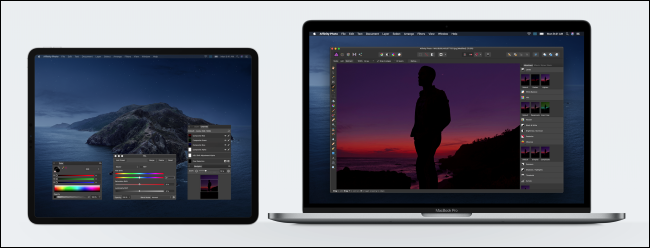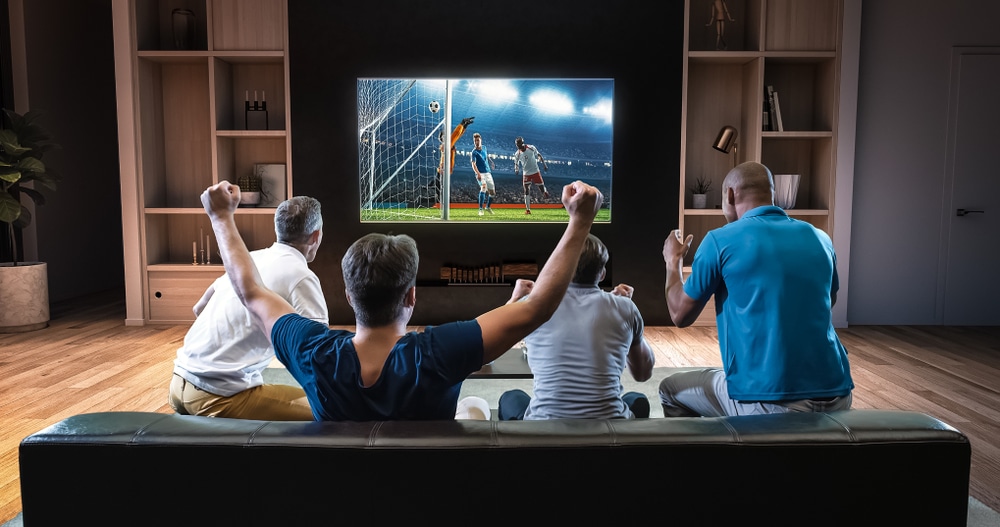
Future Tech: What We’re Most Excited About

Future Tech: What We’re Most Excited About: It might be a little early to celebrate the death of the twenty-teens, but we can’t help but look at the future. Wave goodbye to crappy internet, console gaming, and unconvincing Instagram filters. Say hello to the tech of the future.
To be clear, we aren’t trying to make half-baked predictions. We’re focusing on technological innovations that are in progress right now—things that should come to a universal and commercial maturity in the next five or ten years.
We Need Gigabit Internet Speeds
Internet in the United States is frustratingly slow. In fact, the internet all over the world is much slower than it should be, even though we’ve already developed super fast data transfer technology. Fiber optic cables are capable of transferring 500 gigabits of data per second, and 5G can reach speeds of about 10 gigabits per second. If these numbers don’t mean much to you, consider the fact that 5G is hundreds of times faster than the average internet speed. So, why do we still have crappy internet?
Basically, our internet sucks because we don’t have proper internet infrastructure. But that’s set to change in the next few years. Cellphone carriers are racing to bring 5G across the nation, and there’s a good chance that your current phone supports 5G. At the same time, about 25% of all Americans live in an area that has access to fiber optic internet (even if they don’t take advantage of it), and that number will only continue to grow.
In the end, the demand for 4K may drive the demand for gigabit internet speeds. People want to make video calls in 4K, they want to stream movies and TV in 4K, and they want to stream video games in 4K. All of that high-resolution data transfer is going to require some super fast internet, and only our ISPs can make it happen (please make it happen).
Game Streaming Will Revolutionize Gaming

Game streaming is exactly what it sounds like. It’s Netflix for games. You subscribe to a service, and that service allows you to play video games through an internet connection. There’s a small chance that you’ve heard about services like PlayStation Now and Shadow, but the real giants of game streaming might be Google, Bethesda, and Microsoft.
While other game streaming services feel like half-baked experiments, Google’s Stadia seems to be an all-out invasion of gaming. Google is using its network of servers and fiber cables to bring 4K/60fps gaming to any computer with 30mbps network speed. Like Netflix, slower connection speeds will result in lower game resolutions, without any buffering or lag.
But game streaming isn’t just some convenience; it’s also a threat to traditional console and PC gaming. Right now, the games that you play are limited by your hardware. If you have a crappy computer, then you’ll have trouble playing resource-heavy games. But with game streaming, video games are processed by remote computers far away from your home. With a good internet connection, you could stream Red Dead Redemption 2 in 4K at 60 FPS to a cheap desktop, tablet, or even a cellphone.
Game streaming could be the death of console gaming. At $10 a month, a year of Stadia is cheaper than any current-gen gaming console. And you don’t even have to pay to use Stadia; its “Base” subscription is free. While there are plenty of hurdles to jump through, the fact that more than five major companies are racing to build the best streaming platform sends a clear message: game streaming is a revolution.
The Untethering of Virtual Reality
Alongside game streaming, the world of virtual reality is set to blossom over the next decade. Headsets are producing high-resolution video, computers are more capable of rendering VR environments, and brands like Oculus are committed to pushing down the price of VR without sacrificing quality.
One of the most significant advancements that we’ll see in VR is the untethered headset. As of right now, it’s challenging to have a steller VR experience without tethering your cranium to a PC. Sure, you can use an HTC VIVE to connect a headset to a PC wirelessly, but the goal is to eventually have a super powerful headset that can work anywhere, anytime. It’s hard to know whether this change will come from more powerful hardware or game streaming, but its development is right over the horizon.

Haptic feedback is another other future-feature of VR that we’re excited for. The ability to touch and feel things in VR will add a new (albeit uncanny) dimension to gaming. To do this, companies will have to abandon yucky, mushy controllers and embrace products like the VRgluv or the HaptX glove. Hopefully, these gloves will be used for more than just punching monsters and holding virtual baseball bats. Over time, they could be used to feel textured surfaces like concrete or fur, for example. Or, they could emulate the density of objects, like rubber.
RELATED: Virtually Forgotten: Nintendo’s Virtual Boy, 25 Years Later
ToF Cameras Will Bring Augmented Reality to Life
Of course, we’re also excited to see a virtual world outside of video games. Augmented reality has already found a home in Instagram filters and Pokemon Go, but we haven’t found a way to make those AR applications look “real.” Our cameras just aren’t good at “seeing” the world. But thankfully, Time of Flight (ToF) cameras are set to change things.
At a basic level, ToF cameras are HD cameras with an increased depth resolution. They use LIDAR (a combination of IR light frequencies) to “see” an environment as a 3D map, similar to how a bat uses sonar to “see” in the dark. This increased depth resolution is great for photographers, but it’s also perfect for AR applications.
Now, the use of a ToF camera in a game like Pokemon Go is pretty apparent. The camera can map a 3D environment, which makes the Pokemon’s place in that environment more consistent—even in poor lighting conditions. It also gives Pokemon the ability to maneuver through the 3D environment, so you could theoretically chase a Pikachu around your living room.
The AR applications for a ToF camera outside of a video game are less obvious, but a bit more impressive. You could use a ToF camera to create accurate avatars, you could use it in-tandem with projectors to create holograms, or you could use it with an AR headset (like Google Glass) to digitize your real-world environment. While these features may be used for industrial purposes before they hit your living room, you’re sure to get a taste with your next cellphone.
As ToF cameras become smaller, more powerful, and more popular, their AR applications will only increase. And since they’re one of the best systems for mapping a 3D environment on the fly, they may be our only hope for improved AR in the future.
The Singularity of Tablets and Laptops
We’ve been struggling to make computers smaller and more convenient for decades. From the inception of the laptop to slim netbooks to the 2-in-1 laptops like the Lenovo Yoga C630, each generation of computer design puts a new spin on portability.
At the same time, tablets and phones are pushing to become viable alternatives to laptops. It’s becoming clear that the singularity (of laptops and tablets) is upon the horizon, and you can see this in Microsoft’s Surface tablets, the over-powered iPad Pro, and Apple’s desktop-like iPadOS.

But this convergence hasn’t been fully realized just yet. If there’s one thing we’ve learned from mindlessly playing with computers, it’s that convenience has consequence. Surface Tablets and 2-in-1 laptops, for example, tend to be a bit overpriced and underpowered, and they lack a tablet-appropriate OS. Similarly, iPads (even with iPadOS) lack the professional software that you might find on a laptop, and they aren’t easy to navigate with a mouse.
Once manufacturers find a way to get over these hurdles, the singularity of tablets and laptops will come to fruition. And while we aren’t there yet, it feels like we’re pretty close, which is exciting.
The Luxury of Easy Whole Home Audio
Whole home audio may seem like a strange thing to get excited about. Admittedly, it’s a luxury that’s been around for a while. But here’s the thing. Traditional whole home audio systems are expensive, messy, and challenging to install. New whole home audio setups, which rely on smart assistants, Bluetooth, and the IoT, are incredibly cheap and easy to use.
While there are some new “packaged” whole home audio systems, like Sonos’ new line of speakers and amplifiers, the future of whole home audio seems to be in the hands of smart assistants. Google Assistant and Amazon Alexa make it easy for anyone to set up a whole home audio system. These products are cheap, easy to use, versatile, and they can be hooked up to any kind of speaker. You don’t have to be restricted to one brand of equipment; you could potentially pair these smart assistants with a combination of speakers or amplifiers (or, you could just use the smart devices’ built-in speakers).
All this tech is already available in some form and will become better, cheaper, and more widespread over the next decade. That’s exciting.







Leave a reply